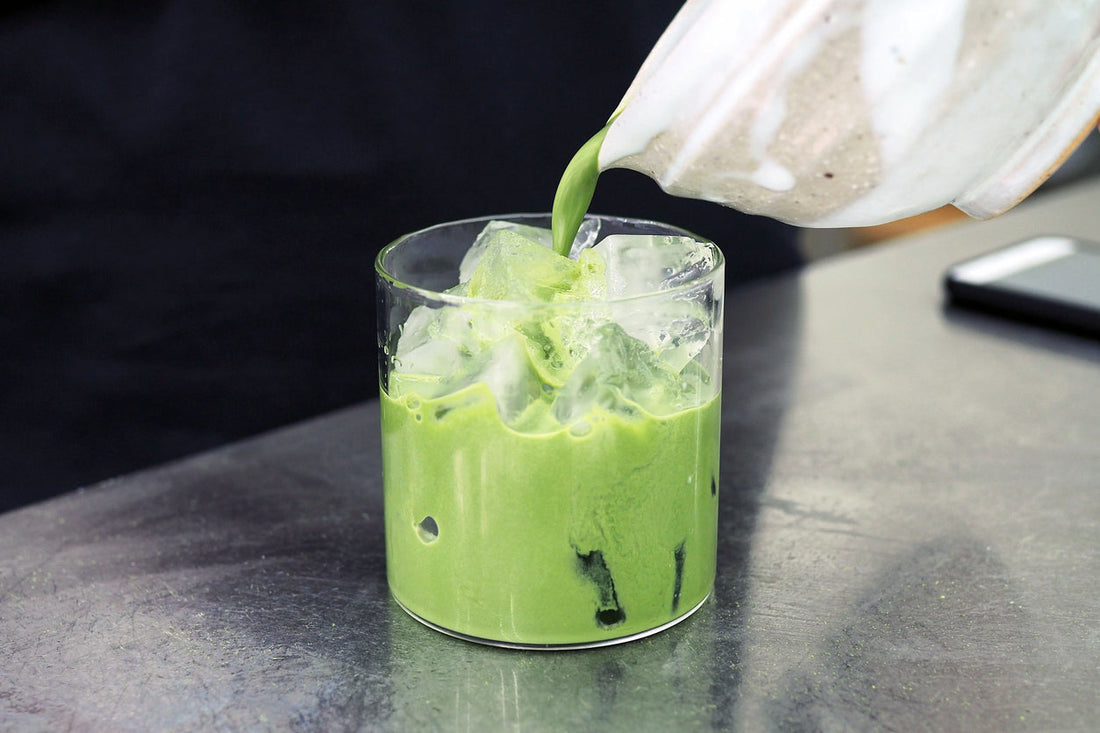
Matcha: An Expert's Tips on Brewing
Michele LillieMost people have heard of Matcha even if they have never drunk it. If you have ever wanted to try Matcha, this post is for you. I will explore what Matcha is, the different types of Matcha and how to brew it to get the best cup. Finally, I will introduce you to a new Matcha we are premiering at English Tealeaves.

Matcha is a Japanese green tea but rather than being in full-leaf form, it is ground into a powder. Japanese green teas fall into one of two categories. One category is composed of teas that are grown in fields with full sunlight. This category contains most of the Japanese green teas such as sencha, bancha and hojicha.
The other category is known as shade-grown. The Japanese green teas in this group are shaded for different amounts of time. Examples of shade-grown teas are matcha and gyokuro. This aspect of the cultivation process causes the teas to develop unique flavor profiles. They tend to be sweeter, less astringent and less bitter. They do, though, contain more caffeine and theanine. The latter modulates the stimulating effects of caffeine.
Ceremonial grade
This is the highest grade of matcha and is the one used in Japanese tea ceremonies. The leaves are picked from the 1st harvest and is the most expensive of the types of matcha. Matcha experts recommend this tea to be enjoyed on its own without any milk or sugar.
Premium grade
This type of matcha is not quite as sweet as Ceremonial Grade but also not as strong as Culinary Grade. This grade is typically made from leaves picked from the second harvest. It will be stronger in taste and slightly more bitter than Ceremonial Grade. People often like to add a bit of sweetness to it, making it ideal for lattes.
Culinary grade
Culinary Matcha is meant to be mixed with other ingredients. It comes from either the second or third harvest and has a stronger and more bitter flavor. This allows it to stand up to other ingredients. It is not an inferior grade, merely a different type. Uses of this matcha are limitless and include smoothies, lattes, ice cream, brownies, cupcakes and chocolate truffles.
Brewing matcha

Matcha is meant to be served with a frothy foam on top. To achieve this, you need to prepare it correctly. Here is the traditional method using a matcha bowl (Chawan), a bamboo whisk (Chasen) and a bamboo scoop (Chashaku).
- Heat your bowl with some boiling water and put your matcha whisk into the water to soften the tines. Pour out the water and thoroughly dry the bowl.
- Sift the matcha powder into your bowl before adding water. This prevents clumping.
- Use water that is at the proper temperature, between 158° and 176°F. Too cool and it will be difficult to whisk. Too hot and you risk making your matcha bitter.
- After sifting the matcha into your bowl or cup, add a small amount of water and whisk into a paste.
- Add additional water and continue to whisk until you get a frothy top.
- You can also use an electric milk frother. Although not traditional, these devices do a great job.
The ratio of matcha to water is not set in stone. Below are some starting measurements but if you are new to matcha, you may want to use less than indicated to get used to the taste. If you wish to, you can increase the matcha to give you a stronger and thicker cup. These two methods of brewing are called Usucha and Koicha. These terms are also used to identify certain types of matcha that are best for these two different types of brewing.
Thin (usucha)
- This is the most common way of preparing and enjoying matcha.
- It is made by using ~1 tsp (2 grams or 2 scoops using the chashaku) of matcha in 2-3 ounces of water.
- If desired, you may add an additional 2-4 ounces of water.
Thick (koicha)
- For thick matcha, use ~2 tsp in only 1 to 1½ ounces of water.
- Brewed this way, you get a very thick cup with a very strong flavor. It is not to most people’s tastes although some appreciate it.
- Since it is so thick, it is not vigorously whisked to achieve a froth but should be whisked much milder without producing bubbles.
Storing matcha
Since this tea will cost you a bit more than some other teas, you want to store it to preserve its freshness. As with all teas, the enemies are air, heat, light, and humidity. Store it in an airtight container and away from other items with strong aromas and flavors. Some even recommend putting it in a plastic bag with all the air squeezed out (you can even use a vacuum sealer) and then placing the bag in an airtight and opaque container. If unopened (still properly sealed in the container in which it was purchased), matcha will last about a year. Once opened, most experts recommend that you drink it within one or, at the most, two months.

Are you ready to try some great matcha? We hope so. We are just introducing a Ceremonial Grade Matcha, Chiyo-no-Shiro. Our Japanese supplier tells us that we are among only a few tea cafes that offer this Matcha. So, hurry in to try it. We also have traditional matcha brewing kits that will help you brew the perfect cup at home.